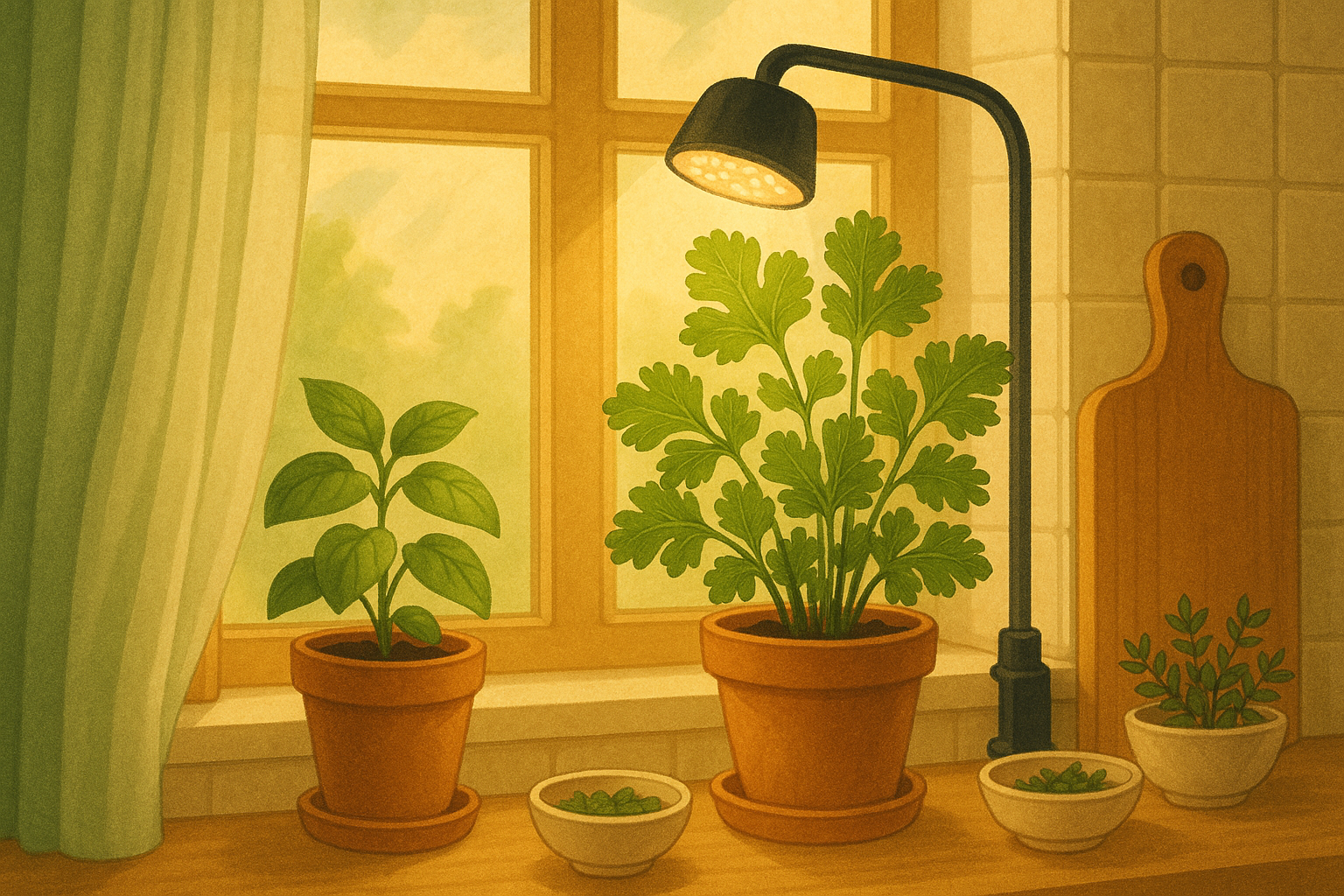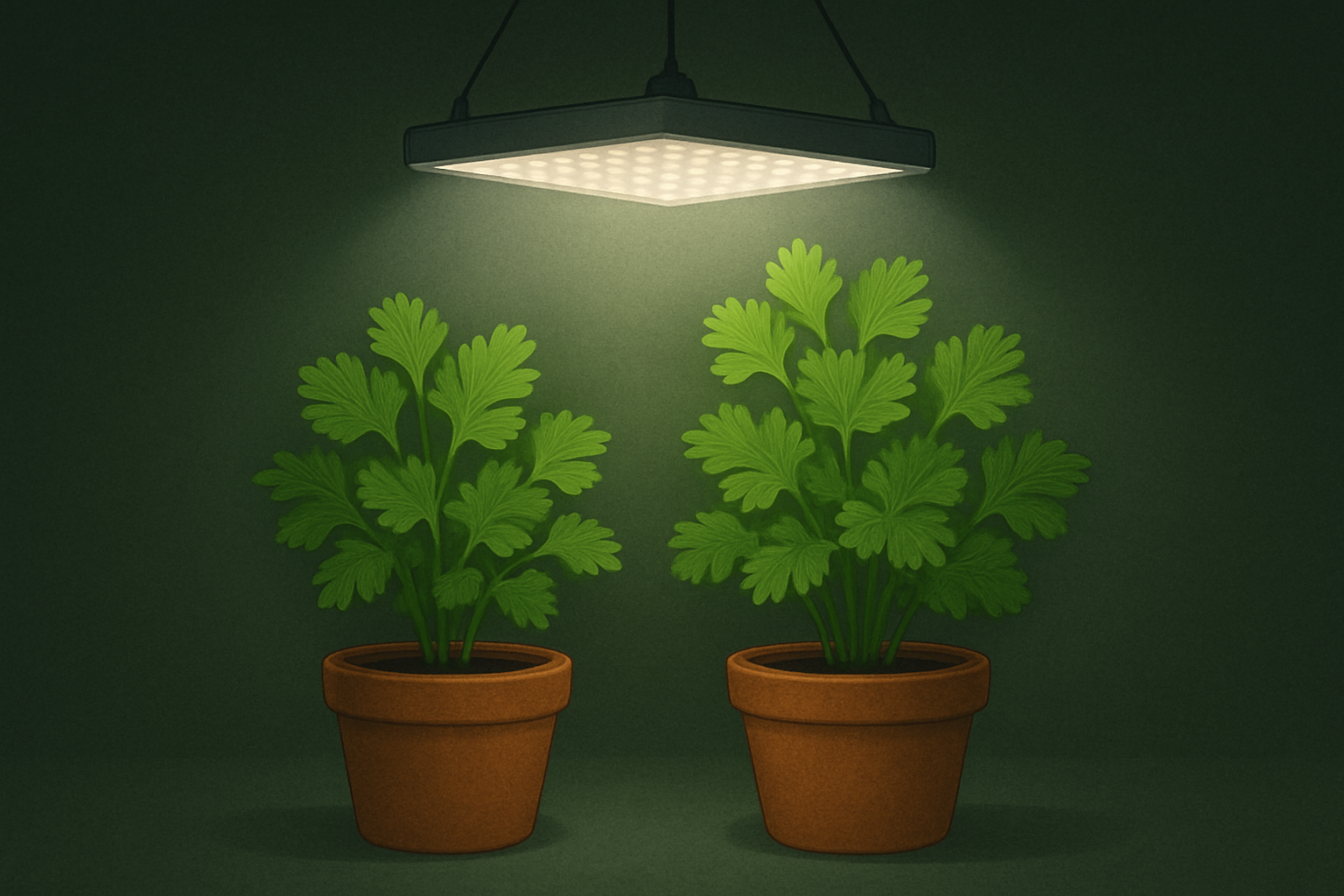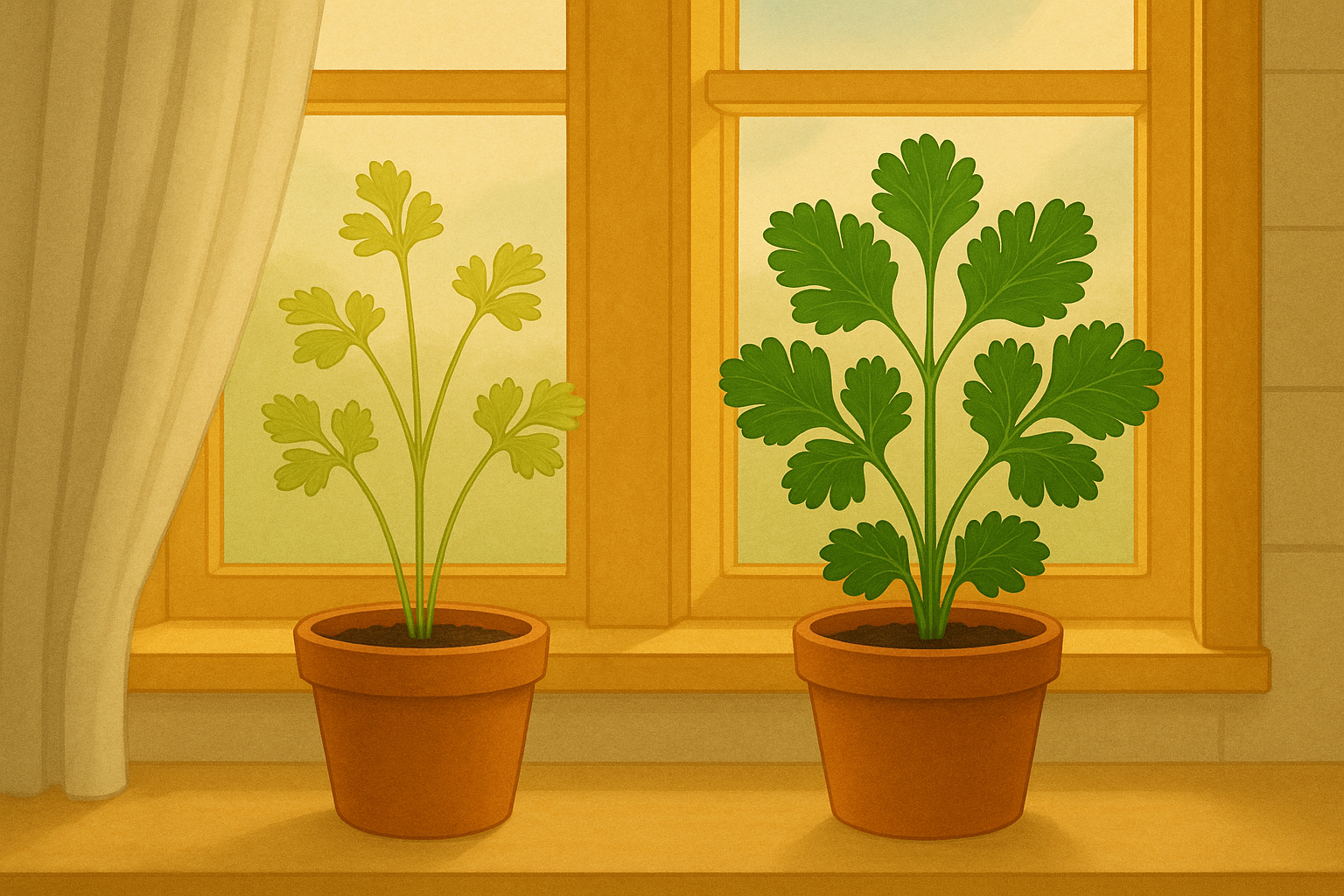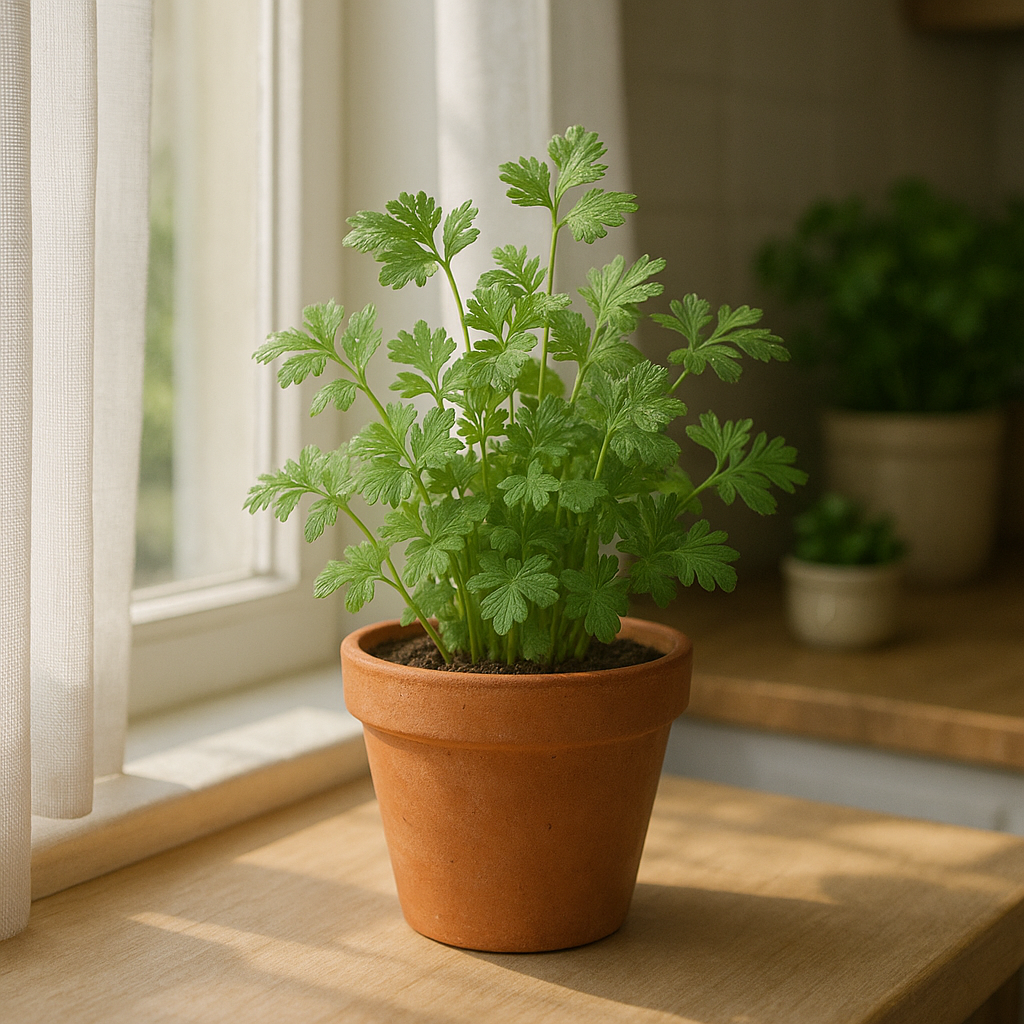Introduction
Cilantro is a popular indoor herb, but many gardeners overlook its light requirements when trying to grow it successfully at home. Providing the right amount and type of light can make all the difference between spindly, weak stems and lush, flavorful leaves. Light doesn’t just help cilantro grow tall—it’s essential for producing the vibrant green color and intense flavor everyone loves. Without enough light, your cilantro may become leggy or pale, resulting in less to harvest and leaves with weaker flavor.
By understanding and optimizing cilantro’s light needs, you’ll encourage robust, bushy growth and a bigger, healthier herb crop on your kitchen windowsill or countertop. Whether you rely on natural sunlight or supplement with grow lights, paying attention to your cilantro’s lighting will ensure a thriving indoor herb garden ready for salads, salsas, and much more.
Understanding Cilantro’s Natural Light Requirements

Cilantro thrives best in bright, indirect light—a sweet spot that provides enough energy for lush growth while protecting delicate leaves from the stress of harsh sun. Direct light, where sunlight beams straight onto the plant for most of the day, can quickly scorch cilantro’s tender foliage. This leads to bleached or crispy leaves and faster bolting—that sudden growth spurt where cilantro shoots up and starts flowering, causing the leaves to lose their flavor.
Indirect light, on the other hand, is sunlight filtered through a sheer curtain or light near a bright window that doesn’t expose plants to direct rays. This is ideal for cilantro grown indoors, mimicking the mild conditions found in its native habitats.
Low light occurs in deep shade or far from windows, making cilantro leggy—meaning it stretches out with long, spindly stems and sparse leaves as it desperately reaches for more light. Leggy cilantro is weaker and more prone to disease.
For best results, place indoor cilantro pots about one to two feet from a bright east- or south-facing window—just out of the sun’s direct path but close enough to soak up plenty of ambient light. Outdoors, choose a spot that gets morning sun and afternoon shade, especially in hot climates, to keep the leaves vibrant and flavorful. Adjusting light exposure as the seasons change or moving containers around your home can help you grow healthy cilantro all year round.
Choosing the Best Spot Indoors for Cilantro

Finding the right spot indoors for your cilantro is key to growing healthy, flavor-packed leaves. Cilantro thrives with at least 4 to 6 hours of sunlight per day, so setting your pot on a south-facing windowsill is your best bet—it gets the longest and brightest light.
If that’s not an option, try an east-facing window where the morning sun is gentle but consistent, helping prevent your herb from wilting. Many home cooks love keeping cilantro on a kitchen windowsill for easy access while cooking; window ledges, sunny counters, or small plant stands near bright windows all work well.
If your home tends to be shady or you notice spindly, pale growth, consider supplementing with a simple LED grow light. Even clamp-on grow bulbs can keep cilantro lush when natural light is low, especially during gray winter months.
Rotate your pot every week so all sides get equal exposure, and keep it away from cold drafts or hot radiator blasts. With thoughtful placement, even a tiny apartment can produce delicious homegrown cilantro year-round.
Supplementing with Artificial Grow Lights

Artificial LED grow lights become essential for cilantro if you’re growing it indoors without sufficient access to direct sunlight. Cilantro thrives on at least 4–6 hours of bright light daily, so if your space is shaded or you’re gardening in winter, a quality LED grow light fills the gap.
Aim for full-spectrum LEDs, which mimic natural sunlight and encourage strong, leafy growth. Brands like Spider Farmer, Mars Hydro, or smaller, budget-friendly panels work well for home growers. Set the light intensity to around 20–30 watts per square foot, and position the light 6–12 inches above your cilantro to avoid scorching while ensuring every leaf gets enough energy.
Use an adjustable hanger if possible, raising the light as plants get taller. To keep things low-maintenance, plug your grow light into a timer set for 12–16 hours on and 8–12 hours off—cilantro, like most herbs, benefits from a consistent day/night cycle.
Place lights directly over the plants, not to the side, since cilantro grows best with overhead illumination. Keep seedlings closer—around 6 inches—then move the light up as they mature to avoid leggy, weak stems.
A simple routine is to turn lights on in the morning and off in the evening, but timers make this foolproof, ensuring your cilantro gets the consistent lighting it needs for lush, flavorful harvests no matter the season or window situation.
Daily Light Duration and Seasonal Adjustments
For healthy cilantro, aim to provide 5 to 6 hours of direct sunlight each day. If you’re growing indoors, use a grow light on the same schedule. In the summer, when days are longer and the sun is more intense, you might need to give your cilantro some midday shade—especially if temperatures soar above 80°F. Excessive heat and sunlight can cause the plant to bolt, or go to seed prematurely.
In contrast, during winter or in dimly lit homes, supplement natural light with a full-spectrum LED grow light placed 6 to 12 inches above the plants. Set it on a timer for 6 to 8 hours a day. If you notice your cilantro growing tall and leggy or with pale, weak leaves, it’s likely not getting enough light. Move it closer to a sunny window or increase the hours under the grow light.
If the leaves look scorched or dry, reduce direct afternoon sun exposure or move the light source a bit farther away. Regularly rotating indoor pots will help the plants grow evenly. By adjusting for the seasons and staying attentive to plant health, you’ll encourage lush, flavorful cilantro year-round.
Common Light-Related Problems and Fixes

When growing cilantro indoors, light problems often show up in a few telltale ways. If your cilantro’s leaves look pale yellow or the stems become long and lanky—a condition called “stretching” or etiolation—it usually means your plant isn’t getting enough light. Simply moving your pot closer to a sunny window or supplementing with an affordable grow light can work wonders.
On the flip side, if leaves turn dry, scorched, or crispy around the edges, the light might be too intense, or the plant could be getting overheated, especially near south-facing windows. A good fix is to move your cilantro to a spot with bright, indirect light and make sure it’s not baking behind glass.
Also, rotate your pot every few days; this helps the plant grow evenly toward the light and prevents lopsided, weak stems. Remember, light and indoor temperatures go hand in hand—hot spots amplify light issues, drying out cilantro quickly, while cooler, dim corners stunt its growth. By paying attention to both factors and making small adjustments, you give your cilantro the best chance to thrive indoors.
Quick Tips for Thriving Indoor Cilantro All Year
Growing cilantro indoors is easier than you might think if you focus on providing the right light, water, and airflow. Start by placing your cilantro pot near a bright, south-facing window—this herb loves lots of indirect sunlight. If your space doesn’t get enough natural light, supplement with a basic LED grow light for about 12-14 hours a day.
Keep the soil slightly moist but not soggy; cilantro dislikes both drought and overwatering, so check the top inch of soil and water only when it feels dry. Good airflow is just as important—open a nearby window for a little while each day or use a small fan to reduce humidity and prevent fungal diseases.
Remember, every indoor space is unique, so pay attention to how your cilantro responds to your environment. If the leaves look pale or leggy, try moving the pot closer to your light source. If you notice spots or mold, increase airflow and cut back on watering a bit.
Thriving cilantro comes from experimentation and observation, so don’t be afraid to adjust your setup until you find what works best for your home.
Conclusion and Encouragement
Growing indoor cilantro successfully hinges on providing the right amount of light, whether through a sunny windowsill or reliable grow lights. Remember, even if your first attempts don’t lead to lush harvests, experimenting with different lighting setups can make all the difference.
Keep adjusting and observing how your plants respond—gardening always involves a little trial and error. Don’t hesitate to ask questions or share your own experiences in the comments; every gardener’s journey helps others learn. Stay patient, keep experimenting, and watch your indoor cilantro thrive with just a little extra care and creativity!
